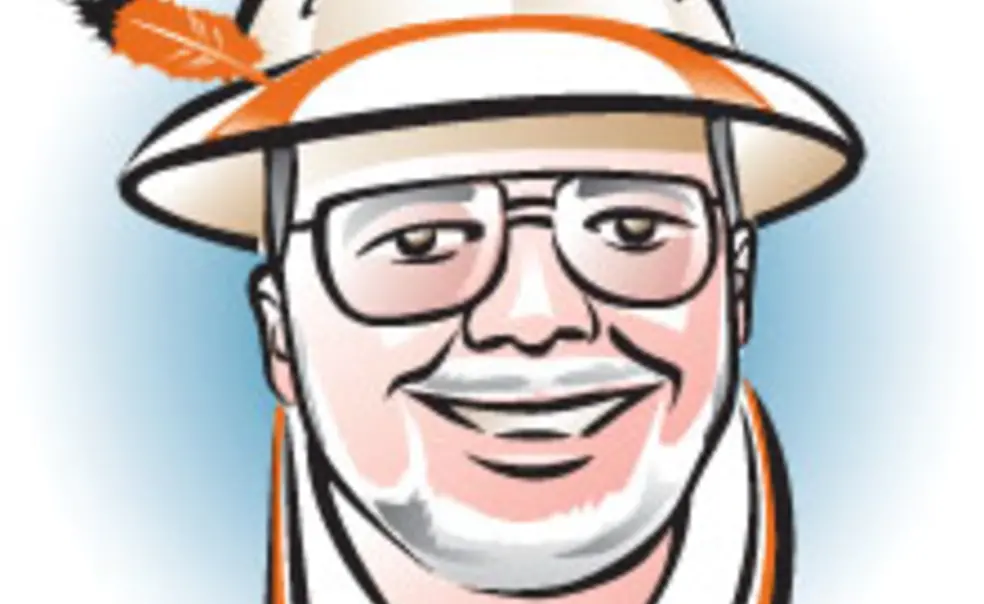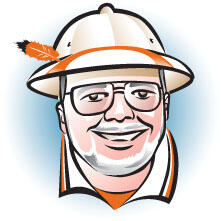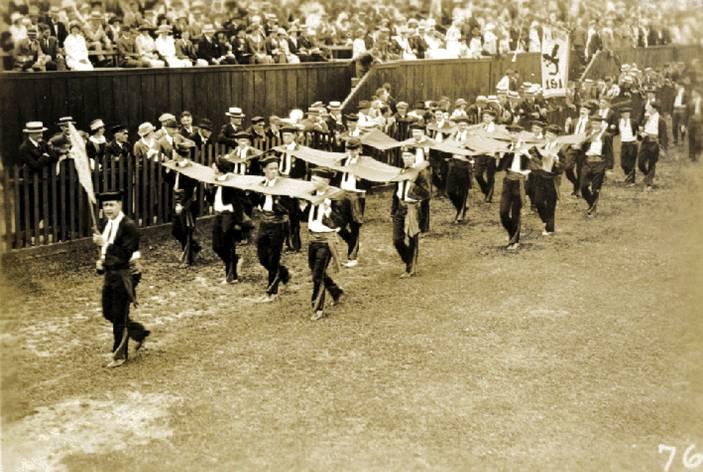Tomorrow’s just your future yesterday. – Craig Ferguson
When you’re shoveling through 263 years of back story (my peculiar assignment here at History Central), stumbling across a certain amount of surprising data along the way is inevitable. Take the pivotal final game of Princeton’s initial basketball season in 1901, a 20-18 squeaker over The Silent Five of New York. Who? Or the enthusiastic founding of the Law School in 1846. What? Or the Great Class of 1911 (the “Junebugs”), P-rade precursor of the Great Class of 1970’s World Famous Seventypede. Whoa:
Why there weren’t archives seriously proposed until the Goheen administration is a murky question since, umm, well, there wasn’t a place to keep any earlier proposal records, right? Conundrums aside, once Firestone was built in 1948 and the great University Librarian William Dix took over in 1952, the Department of Rare Books and Special Collections was begun. The folks in Firestone gradually focused on the piles of aged clipping folders and trinkets that had wandered in from cramped old Pyne Library (much collected by Moses Taylor Pyne 1877 himself), where keeping them organized had been hopeless or worse. So in 1959 Dix approached Bob Goheen ’40 *48 with a pristine, four-page single-spaced proposal for the University Archives, already blessed by the trustees’ library committee, with a grabber: The perfect man to run it, Halsey Thomas of Columbia, was living in Princeton and would love the archivist job. Since it essentially “just” involved reorganizing the library’s existing [mound of impenetrable outdated junk in no useful order that probably but not necessarily contained a few] treasures under expert supervision, it seemed an unthreatening and highly prudent idea. Of course, as it turns out 50 years later, the cataloguing even of some files that already existed then still goes on. Having outgrown the bowels of Firestone, the archives ended up in the stolid but efficient Seeley Mudd Manuscript Library in 1976, now overseen by Archivist Dan Linke and his tiny but highly talented band of history scholars. And today the idea of Princeton being without archives seems loony.
So now that we’re up to speed on how the archives happened (albeit somewhat late in the game), let us move up a level and ask the truly important question: Why?
Huh?
No, really, I’m serious. If the actual purpose of a place like Princeton is to improve the world standards of undergraduate education and (as a handy byproduct) to expand the limits of the known, why would we want to look back? It’s the future that’s important here; that’s literally what the students are. Right? Why would the college charter – signed by our old buddy, Gov. Jonathan Belcher h1748 h1970 – be worth a moment’s concern for the genomics faculty, much less a nice climate-controlled home on Olden Street? Why devote precious, finite resources to this? Why not just ship the stuff off to the Library of Congress and be done with it?
Certainly human physical growth, brain development, and memory-processing happen all the time, day to day. But there’s all sorts of research to show that each of these is accomplished far more efficiently during various stages of sleep, and also that without sufficient sleep they degrade rapidly. So while we theoretically could continue to function without sleep, or with very little, the result would be a human who wouldn’t be remotely comparable to – or competitive with, for you Darwin fans – the good sleepers. Sleep makes us entire people; the archives makes us an entire University.
The student songbooks of the 1920s inform the current students and deans. John Marshall Harlan ’20 informs Sam Alito ’72 and Sonya Sotomayor ’76. Bob Dicke ’39 informs Frank Wilczek *75. Charlie Caldwell ’25 informs Sydney Johnson ’97. John Witherspoon informs Wendy Kopp ’89 and Brian McDonald ’83 and Kit Bond ’60 and anybody who uses the word “campus.” Not because they’re towering symbols – although they are to a point – but because they fought and struggled and screwed up and persevered and accomplished in the same ways that people do it now, and they turned out OK. They are the dream state of the otherwise very wakeful Princeton experience. And recalling Princeton’s part in the richness of those lives requires an accessible memory like the archives. In fact it is more than corporate memory, it is corporate conscience (consciously or subconsciously), at least when we use it correctly.
Let me steal from my own description of the World’s Only Princetoniana Committee, a sort of wetware addendum to the archives: The times, travails, and individuals that gave rise to and nurtured Princeton can serve us well in the 21st century, but we need to be able to hear their voices and feel their resolve in order for that to happen.
Back in the 20th century, that fundamental insight was the great gift given us by the late Fred Fox ’39, the first Keeper of Princetoniana, and by William Dix, Halsey Thomas, and the archives. They believed in tradition in the service of the Princeton community, as a powerful force for renewal and further development and change, not just nostalgia. Whether capturing our songs and symbols, our teachers and texts, our alumni and artistry, our bickering and bonding, or our walkways and Web sites, the archives serves to turn Santayana on his head: Those who understand the past are empowered to improve upon it.
And so to sleep, perchance to dream.














No responses yet